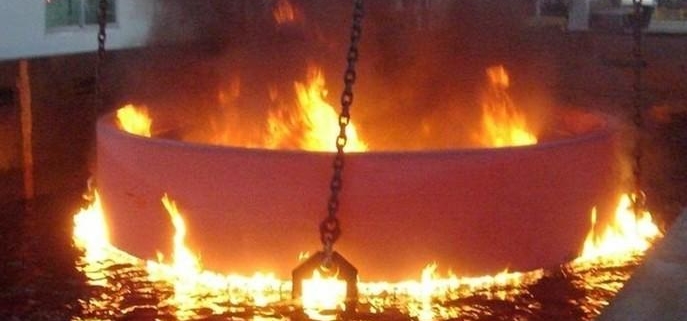Bearing Manufacturing Technology-Heat Treatment
To meet the bearing performance requirements, heat treatment for the purpose of quenching and hardening is an indispensable process. The energy consumed in the heat treatment process accounts for about 25% of the total energy consumption in the bearing manufacturing process. Therefore, from the perspective of energy saving and environmental protection, the heat treatment in the bearing manufacturing process is analyzed. The main countermeasures include: high efficiency of the heat treatment process; small deformation heat treatment technology.
Bearing heat treatment method
There are many kinds of bearing heat treatment methods for the purpose of quenching and hardening. In most cases, it can be roughly divided into overall quenching, carburizing and quenching, high-frequency quenching, carbonitriding and so on.
Integral quenching is the most common bearing heat treatment process, and most of the materials use high carbon chromium bearing steel (GCr15). It is heated to about 840°C in a heat treatment furnace, and the carbide formed by spheroidizing annealing is appropriately and uniformly dissolved in the matrix, and then quenched and cooled, and then tempered at low temperature. Through undissolved carbides and carbides precipitated by tempering, a uniform precipitation structure is obtained, which can be used for bearings that require wear resistance.
Carburizing and quenching is to heat low-carbon alloy steel at about 930 ℃ in a heat treatment furnace, manage the carburizing gas in the furnace, infiltrate and diffuse the carbon from the surface to the inside, and perform quenching heat treatment. Due to the gradient of carbon concentration, after quenching The surface is hardened, because the internal hardness is lower than the surface hardness, it is used for bearings that require impact resistance.
High-frequency quenching is a heat treatment using induction heating. It is mainly used for medium-carbon steel and is used for bearings for automobile wheels with complex shapes. Only necessary parts are hardened.
Carbonitriding involves adding about 5% of ammonia to the carburizing gas to precipitate nitrides near the surface layer. Taking into account the difference in solubility of carbon and nitrogen in austenite, it is usually processed at 750~850 ℃ below the carburizing temperature, which is especially effective for extending the life of bearings used in an environment where foreign matter is mixed. .



